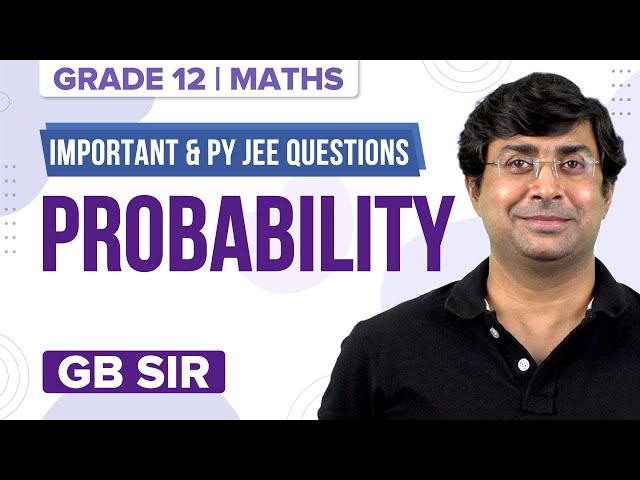Compound probability refers to the probability of two or more independent events both happening. Independent events are events in which the outcome of one event has no effect on the outcome of another event. For example, flipping a coin twice. If the probability of getting heads is 50 percent, then the chances of getting heads twice is 25 percent. In this article, we will learn about the compound probability.
We can find compound probability by multiplying the probability of the first event by the probability of the second event.
The two types of compound events are mutually exclusive compound events and mutually inclusive compound events. When two events cannot happen at the same time, they are called mutually exclusive compound events. Mutually inclusive compound events are cases where one event can occur with the other.
Formula
P(A and B) = P(A) × P(B)
If mutually exclusive events: P(A or B) = P (A) + P(B).
If mutually inclusive events: P (A or B) = P(A) + P(B) – P(A and B).
Related articles
Probability JEE Main Previous Year Questions
Solved Example
Example 1:
If the probability of A to fail in the examination is 0.3 and that for B is 0.2, then the probability that either A or B failing in the examination is:
(a) 0.06
(b) 0.44
(c) 0.5
(d) 0.1
Solution:
Given P(A) = 0.3
P(B) = 0.2
P(AUB) = P(A) + P(B) – P(A ⋂ B)
Here P(A ⋂ B) = P(A) × P(B) = 0.3 × 0.2 = 0.06
P(A or B) = 0.3 + 0.2 – 0.06 = 0.5 – 0.06 = 0.44
Hence, option (b) is the answer.
Example 2:
A and B are events such that P(AUB) = ¾, P(A⋂B) = ¼, P(A’) = ⅔ then P(A’⋂B) is
(a) 5/12
(b) ⅜
(c) ⅘
(d) 5/4
Solution:
Given P(AUB) = ¾, P(A⋂B) = ¼, P(A’) = ⅔
P(A) = 1 – (⅔) = ⅓
P(AUB) = P(A) + P(B) – P(A⋂B)
¾ = ⅓ + P(B) – ¼
P(B) = ¾ + ¼ – ⅓ = ⅔
P(A’⋂B) = P(B) – P(A⋂B)
= ⅔ – ¼ = 5/12
Hence option (a) is the answer.
Example 3: Two dice are tossed once. The probability of getting an even number at the first die or a total of 8 is
(a) 1/36
(b) 3/36
(c) 11/36
(d) 20/36
Solution:
Let A be event of getting even number on first dice.
Let B be the event of getting sum 8.
n(A) = 18
n(B) = 5
n(A⋂B) = 3
n(S) = 36
P(A⋃B) = P(A)+P(B)-P(A⋂B)
= (18/36)+(5/36)-(3/36)
= 20/36
Hence option (d) is the answer.
Video Lessons
Probability – Important Topics

Probability – Important Questions

Frequently Asked Questions
What are Independent events?
A and B are Independent events, if the probability of occurrence of an event A is not affected by the occurrence of another event B.
How do we find the Compound Probability?
We can find compound probability by multiplying the probability of the first event by the probability of the second event.
Name the two types of Compound Events.
Mutually exclusive compound events and mutually inclusive compound events are the two types of Compound Events.
Give the Compound Probability Formulas.
For mutually exclusive events, P(A or B) = P(A) + P(B).
For mutually inclusive events, P(A or B) = P(A) + P(B) – P(A and B).
What do you mean by compound probability?
Compound probability refers to the likeliness of two or more independent events occurring together. We calculate the compound probability by multiplying the probabilities of the occurring events.
Can probability be greater than 1?
No. Probability lies between 0 and 1.
What do you mean by mutually exclusive events?
Events which cannot occur at the same time are called mutually exclusive events.
What is the value of P(A∩B), if A and B are mutually exclusive?
If A and B are mutually exclusive, then P(A∩B) = 0.

Comments